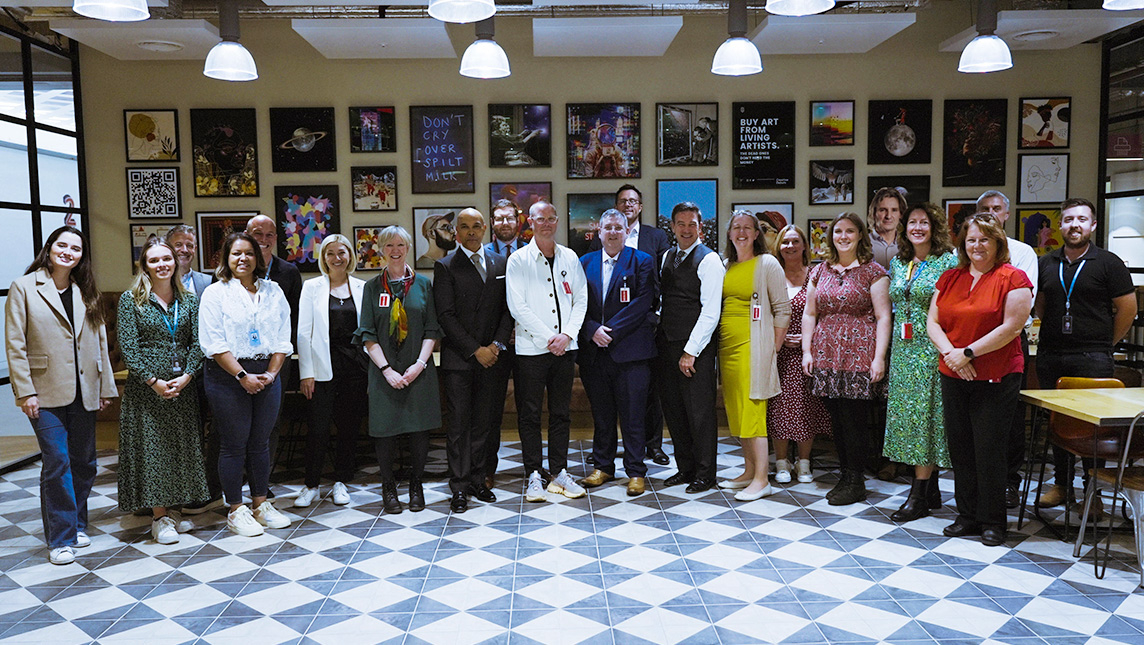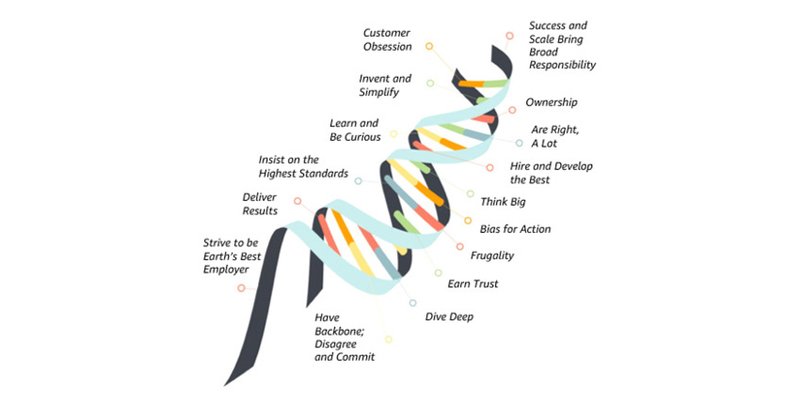Education leaders take inspiration and learn from Amazon
There’s a disconnection between the increasing digital and technical needs of employers and the skills of today’s college and university leavers.

Better links with cutting-edge industry could help guide the education sector through the kind of technological transformation and narrow this gap: to innovate and upskill teaching staff, to harness emerging technologies and advance the march towards carbon net zero.
To this end, Jisc is arranging visits for education leaders to cutting-edge businesses. Recently, a group of higher and further education leaders went to Amazon’s London base; this followed a visit to Siemens’ Connected Curriculum centre in Manchester.
Of course, there’s much the education sector can learn from Amazon’s approach as a wholly digital business and, as you’d expect, it is evangelical about the potential of cloud computing as a cost-effective alternative to traditional IT infrastructure in colleges and universities.
Other topics for learning also emerged from the visit, especially Amazon’s leadership principles and the need to equip staff and students with the right technical skills to meet the demands of UK plc.
Among the 11 delegates on the visit were Paul Cox, chief executive at Eastleigh College; Nancy Buckley, director of career pathways at Activate Learning; Jackie Grubb, CEO and principal at City College, Plymouth; Mark Hunter, vice-principal, Royal Central School of Art and Drama; and Dr Awel Vaughn-Evans, associate pro-vice-chancellor, Bangor University.
Leadership principles
Agreeing that the visit was a great learning and networking opportunity, Paul, Nancy and Jackie are particularly inspired by Amazon’s culture of innovation, which could also be applicable in a college or university setting.
Nancy says:
“I found the staff culture piece fascinating and enjoyed the conversation around how Amazon sets goals and brings ideas into reality through pitching and writing ‘press releases.
"So, from the outset, they aim high, at an ideal, and work backwards, rather than beginning with a problem. It’s a more positive way of working.”
And Jackie adds:
“Amazon demonstrates clear values and purpose within a culture that enables risk taking without fear of blame or failure. I also support the idea that innovation should come from more senior leaders.”

Text description for Amazon leadership principles graphic - A DNA helix structure listing Amazon's leadership principles, which includes: customer obsession; invent and simplify; learn and be curious; insist on the highest standards; deliver results; strive to be the Earth's best employer; have backbone, disagree and commit; dive deep; earn trust; frugality; Bias for Action; think big; hire and develop the best; are right, a lot; ownership; success and scale bring broad responsibility
Amazon is organised for innovation, as its leadership principles, above, illustrate. Its leaders create a culture that is ‘obsessed’ with customers in the same way that principals and VCs are focused on their students.
Their leaders are people of action: they are curious and brave. They seek talented staff who are expected to experiment. They organise small, empowered, multi-disciplinary teams that own what they create. They are frugal and find ways to simplify and speed up processes because time is money.
In Amazon’s digital environment, speed and success are dependent upon robust technical architecture. As the owner of the UK’s national research and education network, Janet, Jisc concurs. Likewise, Jisc aligns with the Amazon principle that digital transformation is not about technology – it's a way of thinking and operating that requires leadership.
Barriers to innovation
The visit also included presentations from Amazon on topics including building cloud skills for the digital economy and building digital skills - a strategic city approach (based on a case study of Dundee.
Responding after the visit, the HE and FE leaders spoke about introducing cutting-edge, industry-standard technology into the curriculum. For FE in particular, balancing capital investment and operating costs is a constant battle.
Paul Cox feels that uncertainty around funding and ever-changing qualifications are holding back the kind of investment and strategic planning necessary to make holistic changes. He acknowledges though, that technology and innovation could help reduce the licensing and staffing costs of managing data, which is a sector-wide issue for colleges.
While recognising the value of learning from industry, Nancy Buckley is frustrated that the current curriculum doesn't require it. Teaching these ‘new’ skills would rely on students wanting to go the extra mile in their own time.
Mark Hunter adds:
“Finding teachers and professional services staff with the right skills is a constant challenge, and there’s a lack of project planning expertise to implement new practice and systems”
Awel Vaughn-Evans agrees:
“We need to ensure that staff have the time within their workloads to engage with emerging technologies, and we need to work on upskilling staff and students so that these technologies are used effectively and efficiently in teaching and learning.
“Tools are available to facilitate this, but in practical terms, we need more staff to support the digital agenda, which is challenging in today’s climate.”
Jackie Grubb feels that red tape holds back education from operating and innovating in an agile manner and offers a solution. She said:
“There is often too much talking about what is wrong and what should be done, and not enough focus on making transformational change. The only way forward is to gather the right people with the right skills together to focus on outcomes and impact, with voices from both education and industry represented.”
Partnerships with industry
Doing nothing though, is not an option, as Cox points out:
“If we are unable to keep pace with industry 4.0, what we teach will be out of date and students will not have the required skills to become valuable employees.
“For our teaching and training to remain relevant, we need employers to commit for the long term to co-design curriculum. In addition, we all need to recognise that, in certain sectors, schools and colleges cannot match salaries of industry - and industry experts may well be needed to support delivery in certain specialisms.”
Awel Vaughn-Evans underlines employers’ dissatisfaction with graduates’ skills, quoting a Deloitte report from 2018, which shows that, pre-pandemic, only around 12% of business leaders believe that graduates had the digital skills need to thrive at work. She adds:
“The biggest risk is the employability of our students: we need to make sure they acquire the right skills so they can enter the workforce with ease.”
Mark Hunter feels the HE sector is already under scrutiny from students and their parents concerned about the value of degrees. Universities that fail to prepare graduates for employment will be less competitive.
And Jackie Grubb says:
“Recruiting the right staff with the right skills is key here, so that skills providers can respond to employer needs.”
Perfectly summing up the purpose of the visit, Jackie concludes:
“I’d like to learn more from visits like these to industry. How can we embed AI in the curriculum? What can we co-create and co-design with industry partners? Which industry experts can staff shadow?
“In essence, how can we work together to create a sustainable, fit-for-purpose workforce for the future?”